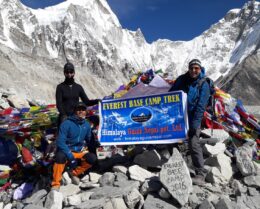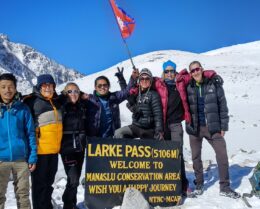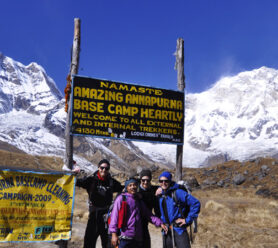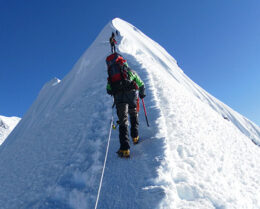Best Destination Places in 7 Provinces of Nepal: Selected by the Nepal Government in 2075 B.S.
PUBLISHED ON 25 April, 2024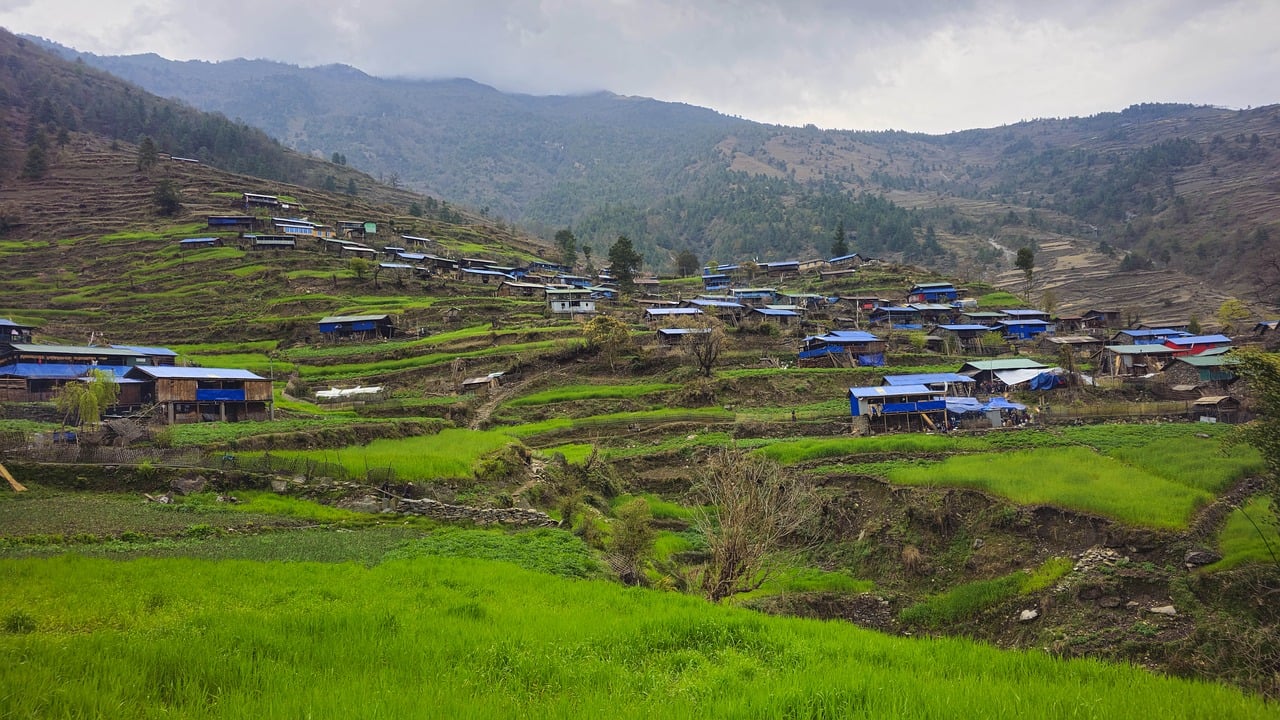
Its stunning topography separates Nepal’s seven provinces. The Nepalese constitution stipulates that each province has its system. In 2075 BS, The best destination places in the 7 provinces of Nepal have been selected by the Nepal government.
Nepal was divided into five developmental regions, each consisting of 14 zones and 75 districts, before the official formation of seven province regions. Two additional districts were added to the existing 77 districts with the creation of seven provinces, however, the five development regions that previously made up the system were eliminated. Seven provinces were formed from the haphazard grouping of the 77 districts of Nepal. Seven provinces were formed from the haphazard grouping of the 77 districts of Nepal.
When visiting Nepal, most people mainly think about Mt. Everest and the mountains. It goes without saying that because of the travel agency’s chain of packages, visitors and travelers hardly ever get to see Nepal outside of Pokhara, Chitwan, and Everest. After all, eight of the ten tallest mountains in the world are located there.
1. Koshi Province: Sandakpur, Ilam
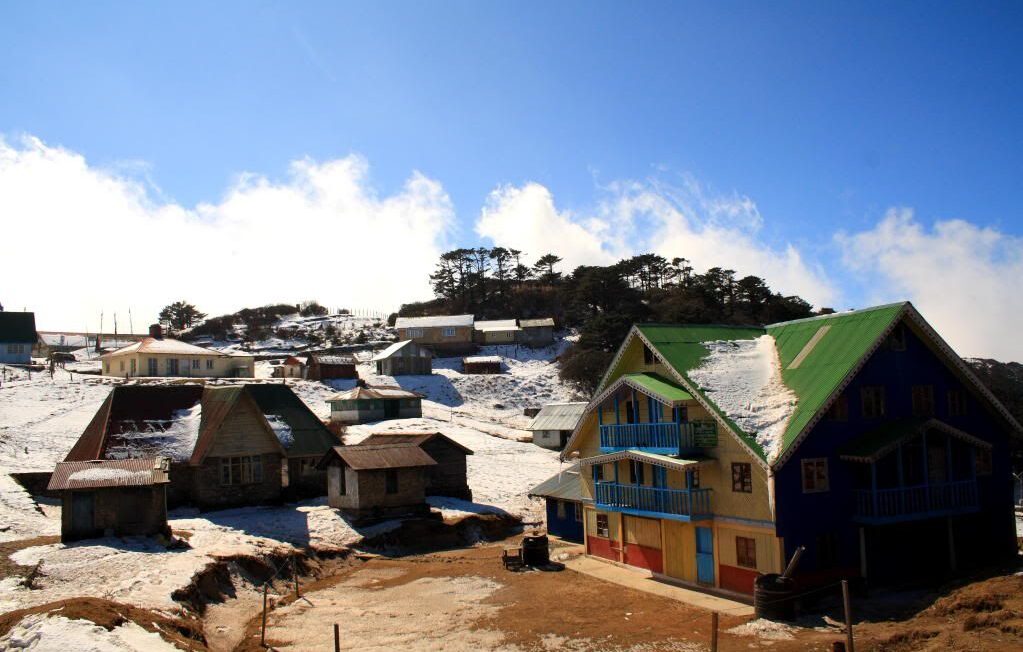
“Sandakpur,” the enchanted hill in eastern Nepal. The highest peak in Illam District and West Bengal State is between the borders of India and Nepal at 3,636 meters above sea level. At the foot of Mount Kanchenjunga, the world’s third-highest peak, Sandakpur provides some of the best sunset and sunrise views. From its peak, one can also see four of the five highest peaks in the world: Everest, Lhotse, Makalu, and Kanchenjunga.
The Red Panda, an endangered species, lives in the Sandakpur region. It is an honor to see a red panda in its natural habitat, and numerous international groups are working to preserve the species in this area. Numerous visitors arrived to appreciate the splendor of the avian world. Because it is home to several bird species, this location is also well-known for bird viewing. Overall, the pristine paths on the Sandakpur lead to breathtaking views of the Himalayas, among the best in the world.
2. Madhesh Province: Dhanushadhan, Dhanusha
Dhanushadham, also known as Dhanusha, is a sizeable ancient and cultural web page positioned inside the Dhanusha district of Nepal.
In Hindu mythology, it holds great importance as believers consider it the birthplace of the revered sage Dhanu, after whom the area is named.
Dhanushadham is famous for its wealthy cultural background, historic temples, and nonsecular importance. One of the most distinguished attractions in Dhanushadham is the Dhanusha temple, devoted to Lord Rama. According to Hindu mythology, Lord Rama broke Lord Shiva’s divine bow, referred to as Dhanusha, during the swayamvara (bridal ceremony) of Sita, for this reason establishing the importance of the area.
Every 12 months, thousands of pilgrims and tourists visit Dhanushadham to pay homage to the deity and to revel in the nonsecular charisma of the location. The colorful fairs celebrated right here, inclusive of Ram Navami and Vijaya Dashami, in addition, decorate the cultural charm of Dhanushadham.
Apart from its religious importance, Dhanushadham additionally boasts breathtaking herbal beauty, with lush inexperienced landscapes and serene surroundings that captivate visitors. The tranquil atmosphere of the vicinity makes it a perfect vacation spot for religious retreats and meditation.
Overall, Dhanushadham isn’t always only a place of spiritual significance but also a treasure trove of records, tradition, and natural beauty, making it a should-visit destination for vacationers looking for religious enlightenment and cultural exploration.
3. Bagmati Province: Indrasarobar, Makawanpur
Indrasarovar, located in the Makwanpur district of Nepal, is a picturesque lake nestled amidst the scenic beauty of the Himalayan foothills. It holds immense religious and cultural significance in Hindu mythology and is revered as a sacred pilgrimage site.
According to Hindu legends, Indrasarovar is thought to have been created through Lord Indra, the king of gods, as a result of his penance to cleanse himself of sins. It is believed that bathing in the pristine waters of Indrasarovar can purify the soul and bestow benefits upon devotees

The tranquil atmosphere, surrounded by the aid of lush greenery and serene landscapes, makes Indrasarovar an ideal vacation spot for spiritual retreats and meditation. Pilgrims and vacationers flock to this sacred lake all through the 12 months, in particular for the duration of auspicious events and religious gala’s, to search for blessings and immerse themselves inside the divine atmosphere.
Apart from its religious significance, Indrasarovar also offers breathtaking perspectives of the encompassing mountains and flora and fauna, making it a famous destination for nature fanatics and out-of-door fanatics.
Overall, Indrasarovar in Makwanpur district isn’t not effective an area of spiritual importance but also a haven of natural splendor and quietness, attracting site visitors from a long way and extensive to experience its spiritual air of secrecy and serene atmosphere.
4. Gandaki Province: Panchase, Kaski
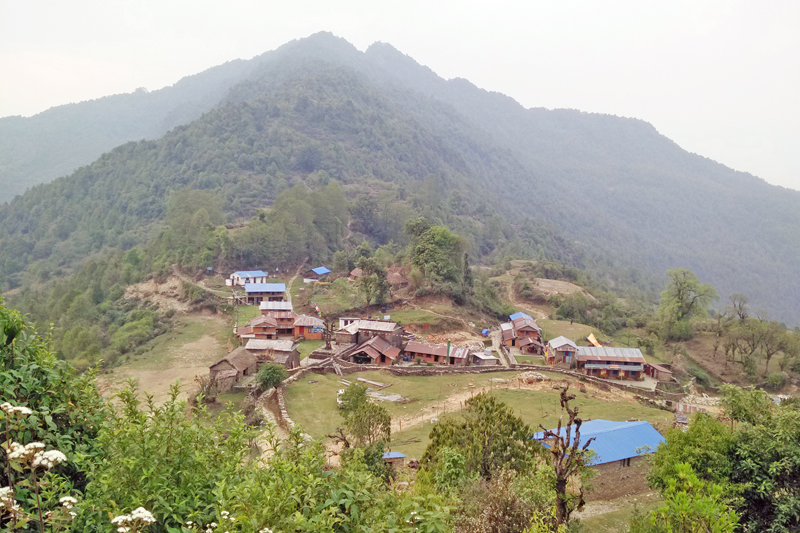
One of the shorter treks around Pokhara that deviates from the official Annapurna Trail is the Panchase Trek. It is an off-the-beaten-path, rural, and cultural trek that provides visitors with an ideal way to discover the natural beauty around Pokhara without sacrificing the amazing views of the Annapurna Himalayan Range or the opportunity to experience village life.
Our short trek begins with a luxurious boat ride over Lake Phewa to get you to the starting point. From there, a short ascent will reward you with breathtaking views of the Annapurnas, Dhaulagiri, Machhapuchhare (Fishtail), and Manaslu, which serve as the trek’s backdrop for much of it.
The trail leads up to the World Peace Pagoda, past various villages where visitors may experience local life, and through a forest where you can view Nepalese flora and fauna. Reaching a height of 2500 meters at the top of Panchase Hill allows you to witness a spectacular dawn over the towering Himalayan peaks, provided you rise early enough.
One of the nearest short treks from Pokhara is to Panchase. The summit of five towering hills is where Panchase is located. Buddha sculptures, Dharmasala, Mahadev Temple, Sidda Baba Temple, and a lookout tower are all located on the top of Panchase. Panchase represents the area where the districts of Kaski, Parbat, and Syangja intersect.
Panchase Hill has breathtaking sunrise and sunset views in addition to outstanding views of Dhaulagiri, Annapurna, Machhapuchhre, Lamjung Himal, and Manaslu. At the summit are the Barah temple and Pancsila Lake. It is popular that saints used to reside there before relocating elsewhere in 1966 when a fire broke out. It is a hallowed location for yoga and meditation, nevertheless.
Read more: Best short treks in Nepal
5. Lumbini Province: Niglihawa, Kapilvastu
Niglihawa is an ancient archaeological site located in the Kapilvastu district of Nepal, close to the border with India. This historic site holds significant significance in Buddhism as it is believed to be the birthplace of Kanakamuni Buddha, who is considered one of the previous Buddhas before Gautama Buddha.
One of the key sights at Niglihawa is the Ashoka Pillar, erected using the Indian Emperor Ashoka at some stage in the 3rd century BCE. This pillar bears inscriptions and engravings that offer valuable ancient insights into the reign of Emperor Ashoka and the spread of Buddhism throughout his time. The presence of this pillar solidifies the website online’s ancient importance and draws pilgrims, historians, and archaeologists alike.
Furthermore, Niglihawa is renowned for its historical relics and ruins, featuring remnants of stupas, monasteries, and other structures dating back to the Buddhist era. These archaeological remains provide glimpses into the wealthy cultural and nonsecular background of the place and offer precious clues approximately the existence and teachings of Kanakamuni Buddha.
The serene environment and tranquil environment of Niglihawa make it an ideal destination for religious contemplation and reflection. Visitors frequently engage in meditation and prayer on the site visitors, seeking to connect with the spiritual essence of Buddhism and the profound wisdom of ancient sages.
Overall, Niglihawa in Kapilvastu district stands as a testimony to Nepal’s wealthy Buddhist historical past and serves as a sacred pilgrimage website online and a treasure trove of archaeological wonders for those interested in exploring the roots of Buddhism and unraveling the mysteries of ancient history.
6. Karnali Province: Rara, Mugu

The Rara Lake Trek is an off-the-beaten-path adventure that leads to the serene and lovely Rara Lake, which is located in the isolated mid-western region of Nepal within Rara National Park.
The lake’s natural beauty and tranquility have made this excursion increasingly popular with both domestic and foreign tourists in recent years. You may discover the amazing biodiversity of the western mid-hills as well as the traditional way of life and rural culture by journeying along their isolated pathways.
Your journey to the Rara Lake Trek begins when you land in Kathmandu at Tribhuvan International Airport. The journey starts with a quick stopover in the Kathmandu Valley, followed by a flight to Nepalgunj and finally Jumla. The trip to Jumla offers breathtaking views of the steep hills and flatlands that make up mid-western Nepal’s terrain. The trail winds through ethnic settlements, alpine woods, and lowlands with numerous ascents and descents.
More info on Rara Lake
Surrounded by fir and pine trees, Ghurchi Langa Pass (3450m) is the highest point you will reach on the walk. Within the Rara National Park, the serene Rara Lake is full of verdant hills and snow-capped high peaks.
The picturesque lake exudes tranquil energy and makes the journey worthwhile, even for those who perspire a little. Rara Lake’s home, Rara National Park, serves as a haven for numerous endangered wild animal and bird species. Wildlife includes Himalayan black bears, musk deer, Ghoral, leopards, wild boars, and ducks.
Moreover, you get to see not just the stunning mountain vistas and intriguing wildlife, but also the traditional way of life of the “Khas” tribe. Originally the capital of the Malla kingdom, Sinja hamlet was home to the “Khas” tribe. After a delightful stroll to Jumla, you can take a mountain flight back to Nepalgunj and continue to Kathmandu, marking the end of the journey.
7. Sudurpaschim Province: Bhadagaun, Kailali
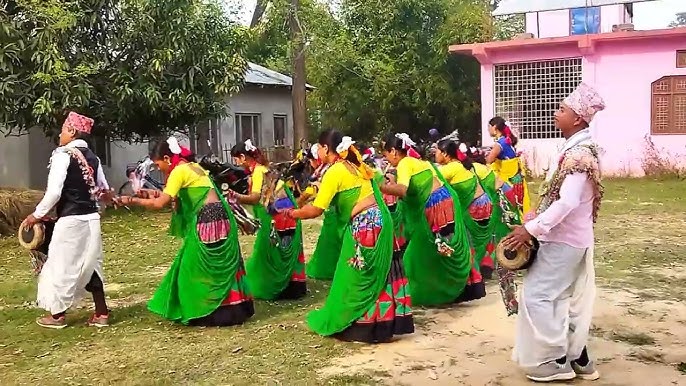
Bhadagaun is a fascinating village inside the Kailali district of Nepal, nestled amidst the lovely landscapes of the Terai place. This rural agreement is famous for its natural splendor, cultural richness, and warm hospitality.
One of the highlights of Bhadagaun is its lush inexperienced environment, characterized by fertile farmlands, dense forests, and serene rivers. The village gives a tranquil getaway from the hustle and bustle of town life, permitting site visitors to immerse themselves in the tranquility of nature and experience the rural Nepalese lifestyle firsthand.
Bhadagaun also recognizes its colorful culture and traditions, with colorful festivals and cultural events being a fundamental part of the community’s existence. Likewise, visitors have the opportunity to witness conventional dances, tune performances, and religious ceremonies that remember the rich cultural history of the vicinity.
The people of Bhadagaun are known for their warm hospitality and welcoming visitors with open arms, treating them to authentic Nepalese delicacies and local cuisine. Staying within the village provides a unique opportunity to interact with the locals, learn about their manner of life, and benefit from insights into their customs and traditions.
Similarly, For nature enthusiasts and adventure seekers, Bhadagaun serves as a gateway to discover the herbal wonders of the surrounding region. From hiking and birdwatching to natural world safaris and river rafting, there are plenty of outdoor sports to take pleasure in. Offering unforgettable reviews amidst the breathtaking scenery of Kailali district.
In essence, Bhadagaun in Kailali district isn’t just a village; it’s a hidden gem waiting to be located, imparting a perfect combination of natural beauty, Tharu cultural richness, and real Tharu hospitality for tourists seeking an off-the-overwhelmed-course journey.
Some Hidden Gems of Nepal
The best places to see in Nepal are its hidden gems; they are the ultimate tourist attractions. Similar to this, the best view across the top 5 unknown sites on this list is provided by the common shadow formed by Mount Everest and other mountain ranges. There are many other sights and activities in Nepal, but trekking in the Himalayas and other parts of the country offers an exhilarating experience.
You can choose to combine well-known events with these undiscovered treasures. Or you can forgo the standard Nepalese trip entirely. Among the many activities you can do in Nepal is stroll along trails, experience the finest zephyrs in the natural world, see breathtaking scenery, and feel soft, pure water bodies.
Namje, Dhankuta:
Nestled amidst verdant foliage, is the Namje valley located in eastern Nepal. The beauty of Namje is full of beautiful surroundings. The aesthetically pleasing Nepali villages and architecture add to the natural beauty, which is full of the Magar people living nearby which adds value to your travel. Views of Mt. Everest and Mt. Manaslu are available to tourists to this valley.
At 2,133 meters, the upper reaches of the Namje valley are a popular destination for tourists. Visitors take in the breathtaking dawns and dusks above the green slopes of the Alps. Travelers will be fully happy with the remote valley and will no longer associate Nepal with just Mount Everest.
Olangchung Gola, Taplejung:
Olangchung Gola is a tiny mountain village in northeastern Nepal. Situated in the Kanchenjunga region, its remarkable elevation enables visitors to witness the Kanchenjunga, the third-highest mountain in the world. Olangchung Gola’s remote position makes it uninhabitable by hikers. Moreover, nestled in the Himalayan mountain range, the little village is fully covered in snow. Because of the village’s alpine nature, tourists will have a remarkable experience despite its remote location.
Siddha Gufa ,Bandipur:
First off, Bandipur is one of Nepal’s most popular tourist destinations. Hidden in this charming little village lies a fascinating and profound Siddha gufa. Siddha Gufa, which is 50 meters high and 437 meters long, is popular as a “gufa” in English. According to reports, the Gufa is one of Nepal’s biggest caves and has a lot of bat roosting areas.
Gufa offers visitors an exciting and daring experience. Minerals like stalactites and stalagmites harmed the gorgeous interior of the cave. The interior of the cave has a cathedral-like appearance because of these minerals. In addition to Siddha Gufa, Bandipur is home to a few other well-kept treasures in Nepal that are well worth a visit. A beautiful little village in Nepal, Bandipur is a hive of Newar culture.
Janakpur Dham, Janakpur:
Janakpur Dham by Mithila preserves the memory of ancient stories. It is the home of Sita, the brave daughter of Nepal and consort of Lord Ram. Because Janakpur Dham is the birthplace of the goddess Sita, it is a well-known Hindu pilgrimage site. In addition to its religious significance, the setting is incredibly picturesque.
The large palace’s corners are full of a feast of vivid, eye-catching artwork. Similar to this, Janakpur is a bustling metropolis with a unique set of issues. Due to its culture, which differs greatly from those of Nepal’s conventional urban centers. Discovering Janakpur is worthwhile as it gives you an alternative perspective on Nepal.
Conclusion
When combined, these seven provinces comprise the entirety of Nepal. Every province has a rich history, a distinct culture, and breathtaking scenery to showcase. Cultures change in tandem with the terrain. From now on, there are countless points of interest to discover while traveling through Nepal’s seven provinces.

